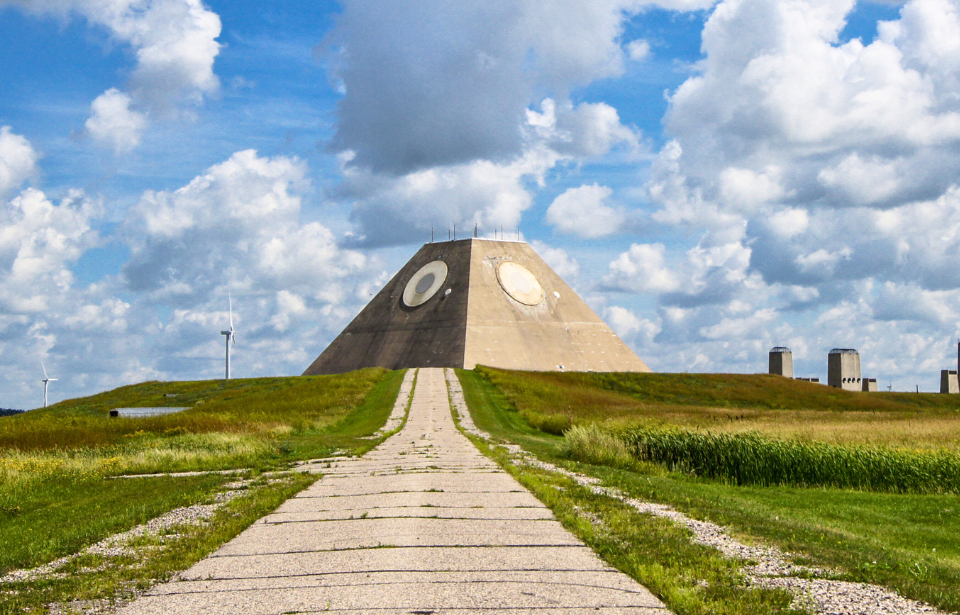In the vast, open landscapes of North Dakota, an unusual structure breaks the horizon—a four-story pyramid that stands as a relic of the Cold War era. This architectural oddity, known as the Pyramid of North Dakota, has a history as intriguing as its appearance suggests. Once a beacon of military might, it is now poised to enter a new chapter as a hub for cryptocurrency mining.
The Pyramid of North Dakota was originally a Cold War military facility
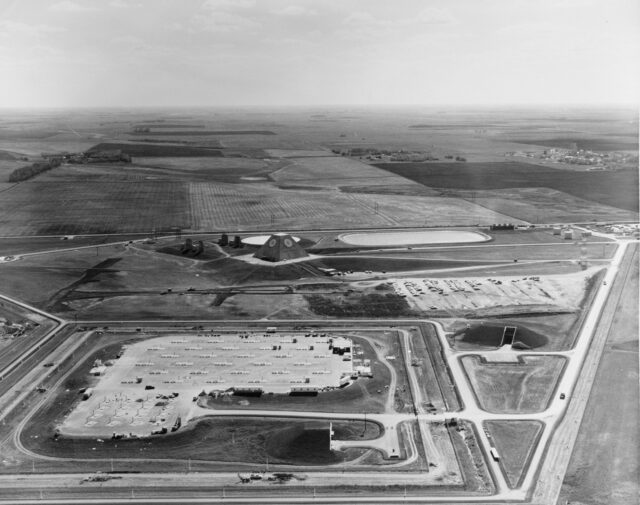
The Pyramid of North Dakota was not always the quiet giant it is today. Built during the height of the Cold War, this massive concrete structure was part of the Stanley R. Mickelsen Safeguard Complex. Its primary role was to act as a missile defense radar designed to detect and intercept incoming ballistic missiles aimed at the United States. The pyramid’s unique shape and size were critical for housing the advanced radar technology of the time, which needed to be both massive and precise.
The facility was a marvel of engineering and a testament to the era’s urgency. However, despite its advanced capabilities and strategic importance, the operational life of the pyramid was surprisingly short. It became fully operational in October of 1975 and was utilized for less than a year before the program was deemed too costly and not as effective as hoped, leading to its decommissioning in April of the following year. The abrupt end to its military use left many questioning what would become of this giant in the prairie.
It has architectural and cultural significance
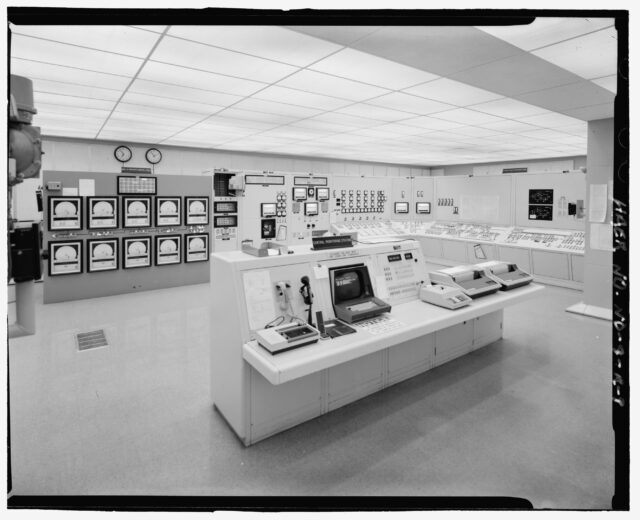
Beyond its military utility, the Pyramid of North Dakota is a striking example of brutalist architecture—a style known for its stark, rugged appearance and concrete construction. The pyramid shape, unusual for military buildings, adds a layer of mystery and intrigue to the structure. For architecture enthusiasts and history buffs alike, the pyramid serves as a physical narrative of Cold War anxieties and technological ambitions.
Culturally, the pyramid has captured the imagination of locals and tourists alike. It stands as a monument to a bygone era, often sparking discussions about the balance between national security and technological advancement. The site has become a peculiar landmark for North Dakota, drawing visitors from across the nation who are eager to see this relic of 20th-century military history firsthand.
The Pyramid of North Dakota transitioned into a cryptocurrency mining facility
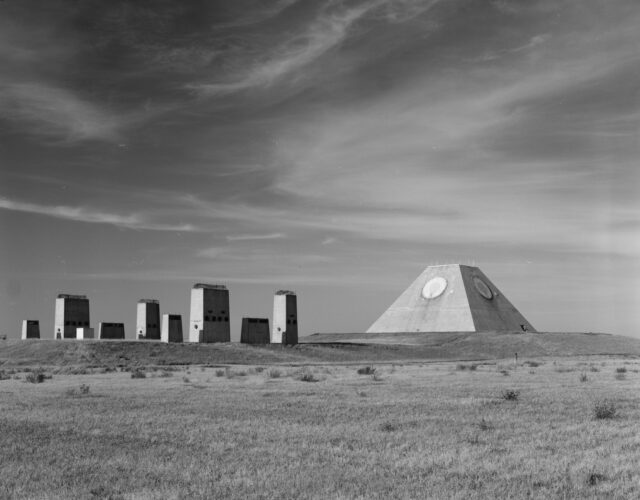
In a surprising twist of fate, the Pyramid of North Dakota is set to become a cryptocurrency mining facility. This transition highlights a fascinating shift from its original purpose, aligning it with one of the most modern and talked-about technologies today. Cryptocurrency mining requires substantial computational power and, consequently, a significant amount of energy. The pyramid’s isolated location and the infrastructure left over from its Cold War days make it an ideal candidate for such an operation. It was purchased in July 2022 by Bitzero Blockchain Inc., who plan to invest $500 million into the project.
This new use for the pyramid not only preserves the structure but also gives it a new lease on life, contributing to the local economy in unexpected ways. The facility is expected to bring new jobs to the area and position North Dakota as a player in the digital economy. For a building that once symbolized the fears of its time, its transformation into a center for digital currency is a testament to the ever-changing nature of technology and economic priorities.
It has environmental and economic impacts
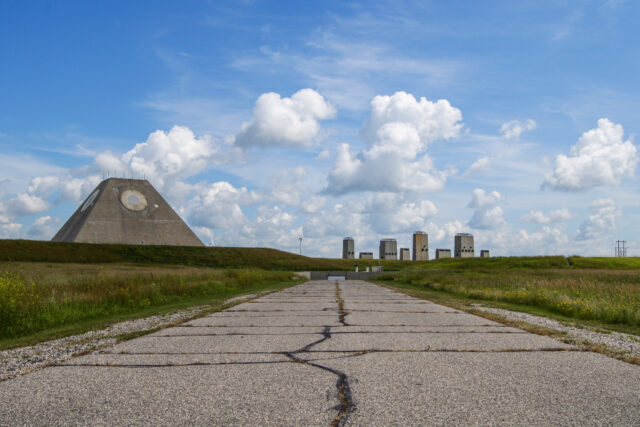
The conversion of the Pyramid of North Dakota into a cryptocurrency mining center is not without its challenges, particularly concerning energy consumption and environmental impact. Cryptocurrency mining is known for requiring a lot of power, which has raised concerns about the sustainability of such operations. The project’s developers have promised to address these concerns by utilizing renewable energy sources and implementing energy-efficient practices.
From an economic perspective, the revitalization of the pyramid is expected to inject new vitality into the local economy. By providing new jobs and boosting local businesses, the project could serve as a model for repurposing other abandoned military sites across the country. It’s a unique example of how historical structures can be adapted to meet contemporary needs without erasing their storied pasts.
It is a symbol of adaptation and resilience
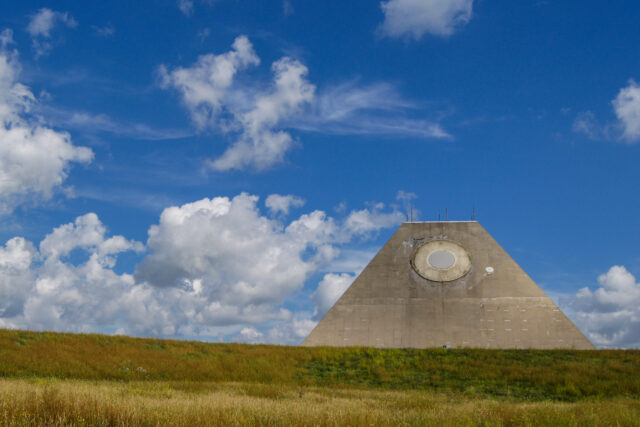
The Pyramid of North Dakota stands as a remarkable example of adaptation and resilience. From a Cold War radar facility to a potential powerhouse in the cryptocurrency market, its evolution reflects broader changes in global technology and security priorities. As this structure transitions into its new role, it continues to be a source of fascination and inspiration, reminding us of the endless possibilities that come with reimagining and repurposing our historical landmarks.
More from us: Leaning Tower in Italy on the Verge of Collapse
As we look toward the future, the pyramid’s story encourages a deeper consideration of how we preserve our past while embracing the innovations of the present. It serves as a bridge between two vastly different eras, proving that even the most unlikely structures can find new purpose in a changing world.
